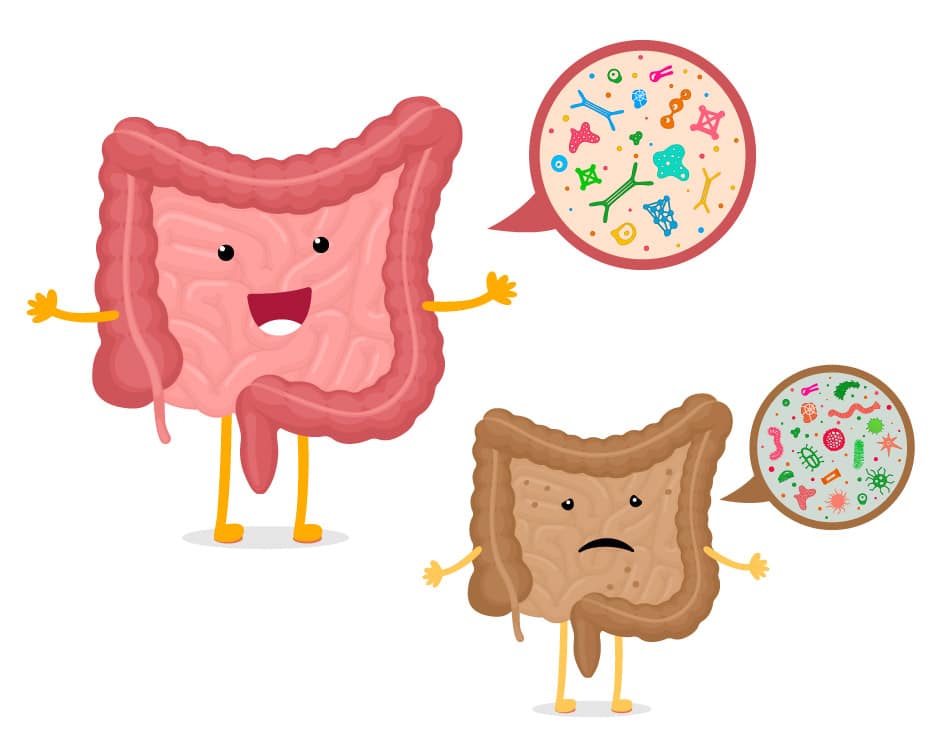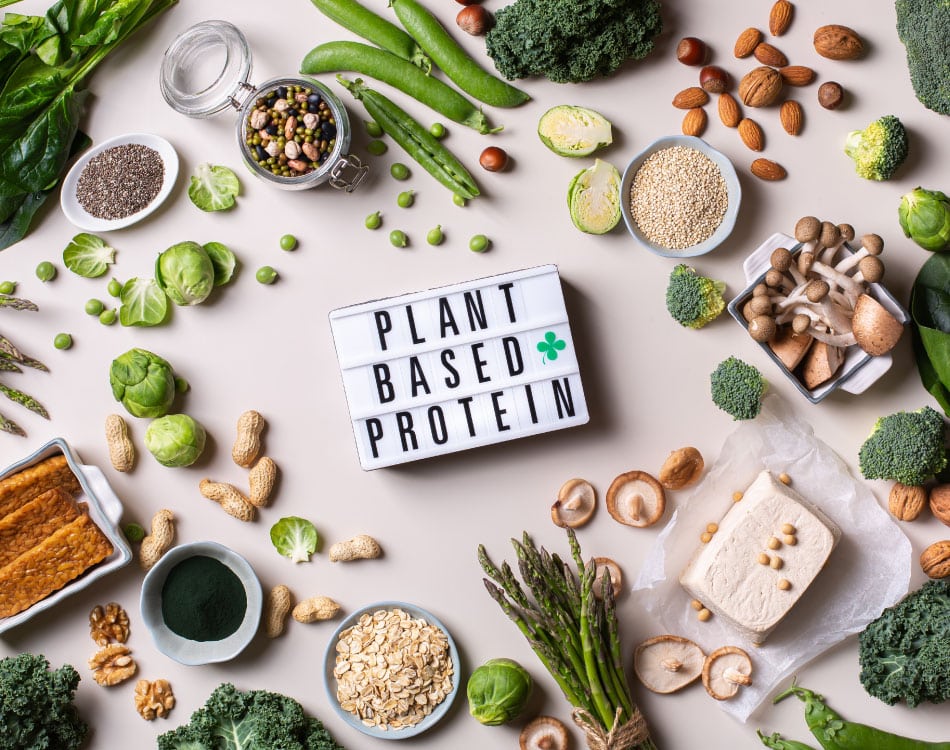There are trillions of invisible microbes that live inside and outside your body, including fungi, viruses and different types of good and bad bacteria in your gut.
Most of these organisms live within your digestive tract and together create your microbiome – ‘micro’ meaning small, and ‘biome’ referring to a naturally-occurring community of flora occupying a habitat.
READ MORE | Why The Path To Vibrant Health Starts In Your Gut
Good and bad bacteria
Many factors linked to our overall health and wellbeing relate to the state of our microbiome.
An unhealthy gut typically results from an imbalance between beneficial or ‘good’ bacteria, known as probiotics, and ‘bad’ bacteria.
An overabundance of bad bacteria can lead to conditions such as irritable bowel syndrome (IBS) and various other digestive disorders to compromised immunity, chronic fatigue and even intense cravings for sugar and carbohydrates
As such, it is important that the good bacteria remain the dominant type that reside in your gut.
However, it also worth noting that even an overabundance of one type of ‘good’ bacteria species can cause digestive and potential health issues.
READ MORE | Improve Digestion And Gut Absorption To Get The Most From Your Diet
Meet the good guys
Good bacteria play various roles within the gut, like aiding digestion and absorption, and supporting immunity.
The mechanisms through which probiotics may exert their effects in the gut vary widely among the different strains.
As each strain may act and function differently, it is important to understand the role of specific strains.
It is, therefore, beneficial to consult a qualified healthcare provider for an individualised treatment plan if you are diagnosed with a gut-related condition.
While there are many different species of bacteria in existence that make up the human microbiome, the following are important ones to keep you healthy and strong:
- Lactobaccilus plantarum: Found in cultured vegetables like sauerkraut. It helps regulate immunity and control inflammation in the gut. It also helps to prevent food allergies and absorbs and maintains nutrients such as omega-3 fatty acids, antioxidants and vitamins.
- Bifidoacterium longum: Improves lactose tolerance and prevents food allergies and diarrhea, as well as the proliferation of pathogens.
- Lactobaccilus acidophilus: Found in fermented dairy products such as yoghurt. It is tasked with keeping the balance of good versus bad bacteria in check to aid the immune system.
- Bifidobacterium lactis. Fermented milk products contain this bacteria. It boosts immunity and prevents digestive problems. It assists in fighting pathogens such as salmonella, which causes diarrhea.
- Lactobaccilus brevis: A rod-shaped bacteria that acts as an immune system fighter by increasing cellular immunity and enhancing immune cell activity.
READ MORE | Restore Gut Health After Antibiotics
The bad actors
Bad bacteria can exist in human bodies at low levels without causing much harm. It is when bad bacteria overpopulate the gut that we generally experience potential digestive and health issues.
Examples of bad bacteria include:
- Clostridium perfringens: Found on raw meat and poultry, in the intestines of animals, and in the environment. One of the most common causes of food-borne illness such as food poisoning.
- Staphylococcus: Commonly found on the skin or in the nose of healthy people. Usually causes no problems or relatively minor skin and soft tissue infections such as abscesses (boils), furuncles, and cellulitis. Serious infections can cause bloodstream infections, pneumonia, or bone and joint infections. Also implicated in inflammatory bowel disease (IBD).
- Escherichia coli (E. coli): Found in the environment, foods, and intestines of people and animals. Most types are harmless or cause relatively brief diarrhea. A few strains can cause severe stomach cramps, diarrhea and vomiting.
- Streptococcus: Often implicated in a condition called small intestinal bacterial overgrowth (SIBO), characterised by excessive bacteria in small intestines, particularly types of bacteria not commonly found in that part of the digestive tract. The excess bacteria often cause diarrhea and may cause weight loss and malnutrition.
Bacteroidetes, which make up roughly 50% of the microbiota in our guts, colonise the entire gastrointestinal tract, including the mouth, throat and stomach, despite the presence of gastric acid and digestive enzymes.
Bacteroidetes play an important role in maintaining a healthy microbiome, but an overabundance can have negative consequences.
How imbalances occur
The balance of good and bad bacteria can shift for various reasons, such as changes in your physical condition, your diet, stress, medication and antibiotic use, infection or illness, and other environmental factors such as exposure to toxins.
Bacterial groups in your intestines also change as you age, with the percentage of bad bacteria typically increasing as you grow older.
For instance, it is common for bifidobacteria to decrease in the elderly with higher chances that bad bacteria such as clostridium perfringens will rise.
The following can be signs of a gut bacteria imbalance:
- Loss of appetite
- Abdominal pain
- Nausea
- Bloating
- An uncomfortable feeling of fullness after eating
- Diarrhea
- Unintentional weight loss
- Malnutrition
Rebalancing your gut
To counter this imbalance, eat a diet high in fibrous vegetables consisting of leeks, celery, pears, bananas and apples as these foods feed healthy bacteria in your gut.
Antioxidants called polyphenols found most abundantly in foods such as fruits, vegetables, extra virgin oil and cocoa can also play a vital role in optimal gut health.
It is also beneficial to supplement with probiotic products that deliver a high load of good bacteria, ideally as a multi-strain combination.
While each strain has a specific function, there is growing scientific support for the long-term use of multi-strain probiotic supplements to manage regularity, gastrointestinal health and digestive comfort.
One meta-analysis* reviewed 11 studies – 8 studies used multi-strain probiotic blends and 3 studies used a mono-strain probiotic. Researchers concluded there was a trend that “beneficial effects were more distinct in the trials using multi-strain supplements with an intervention of eight weeks or more.”
If you use single-strain products, it is beneficial to rotate the type of probiotic you use periodically to ensure no overabundance of a single strain occurs as this can also impact negatively on your microbiome.
Tips to improve your gut health:
- Avoid taking antibiotics unnecessarily. Antibiotics can reduce both good and bad bacteria in the body.
- Supplement with a suitable probiotic supplement, especially after a course of antibiotics.
- Consume natural sources of probiotics. These include plain yoghurt and fermented foods such as kefir, sauerkraut, kombucha and kimchi.
- Limit processed foods.
- Eat prebiotics in the form of high-fibre vegetables, fruits and whole grains as these foodstuffs serve as ‘food’ for good bacteria.
- Stay properly hydrated with filtered and re-mineralised water.
References: *Dale HF, Rasmussen SH, Asiller ÖÖ, Lied GA. Nutrients. 2019;11(9):2048. Published 2019 Sep 2. doi:10.3390/nu11092048















